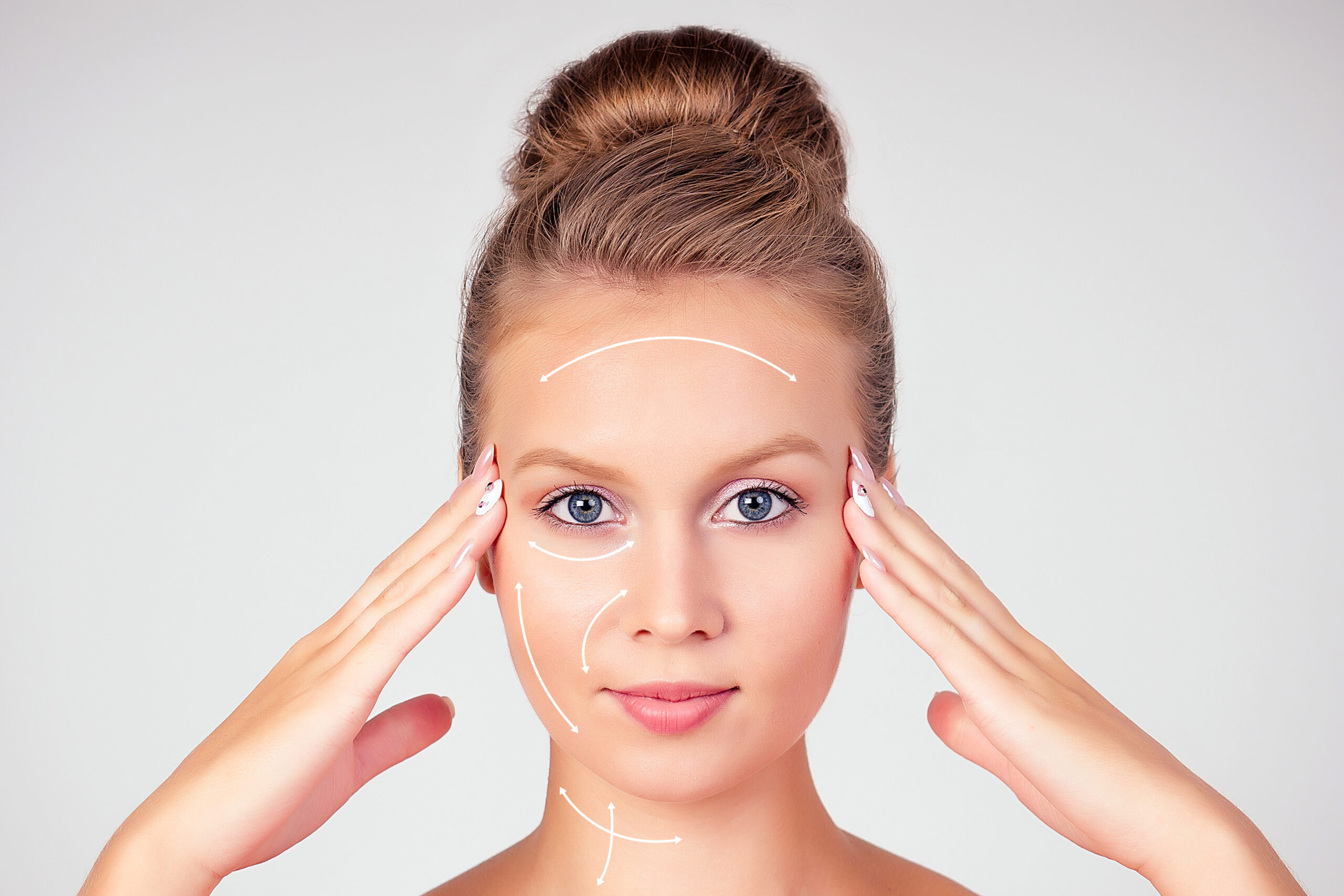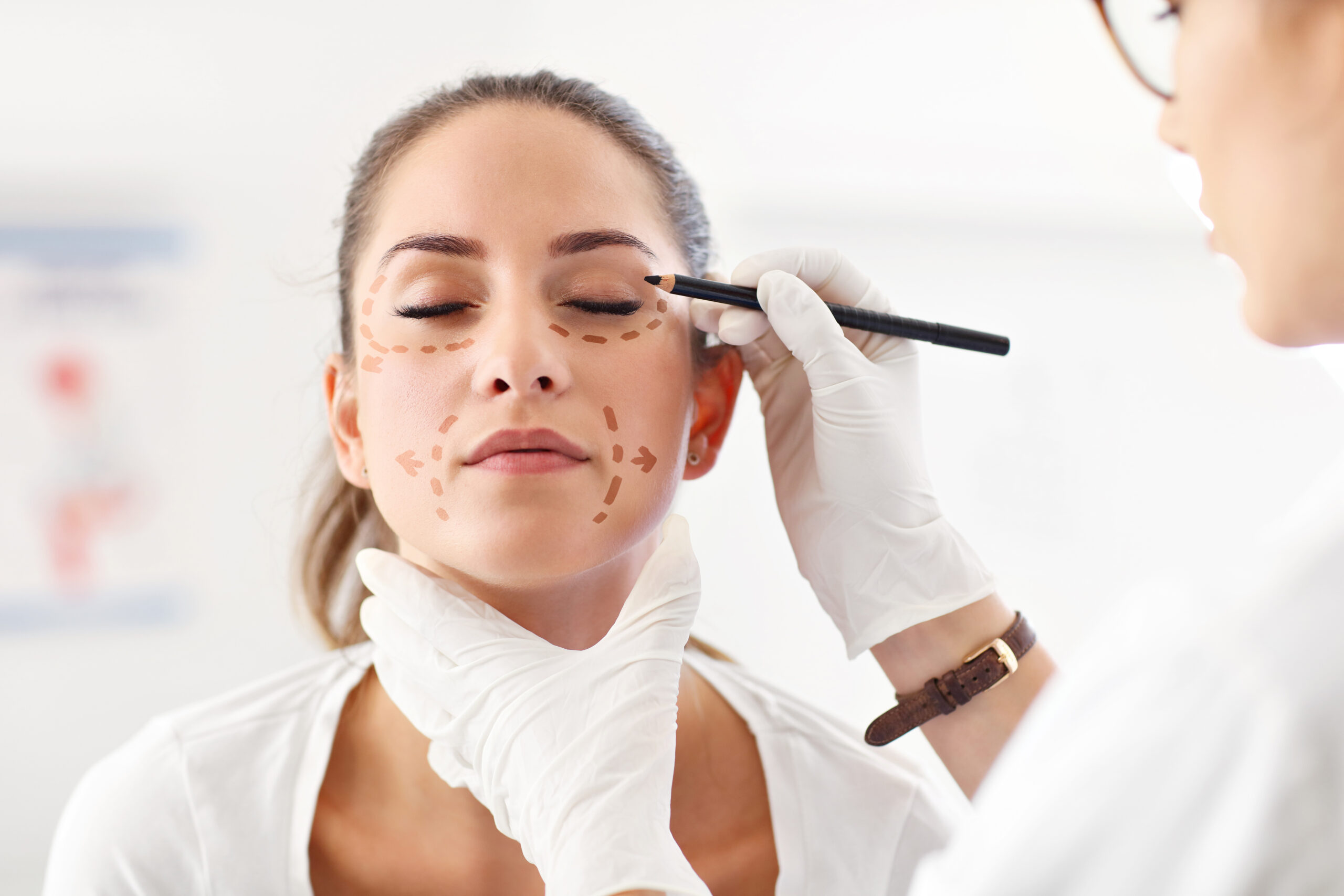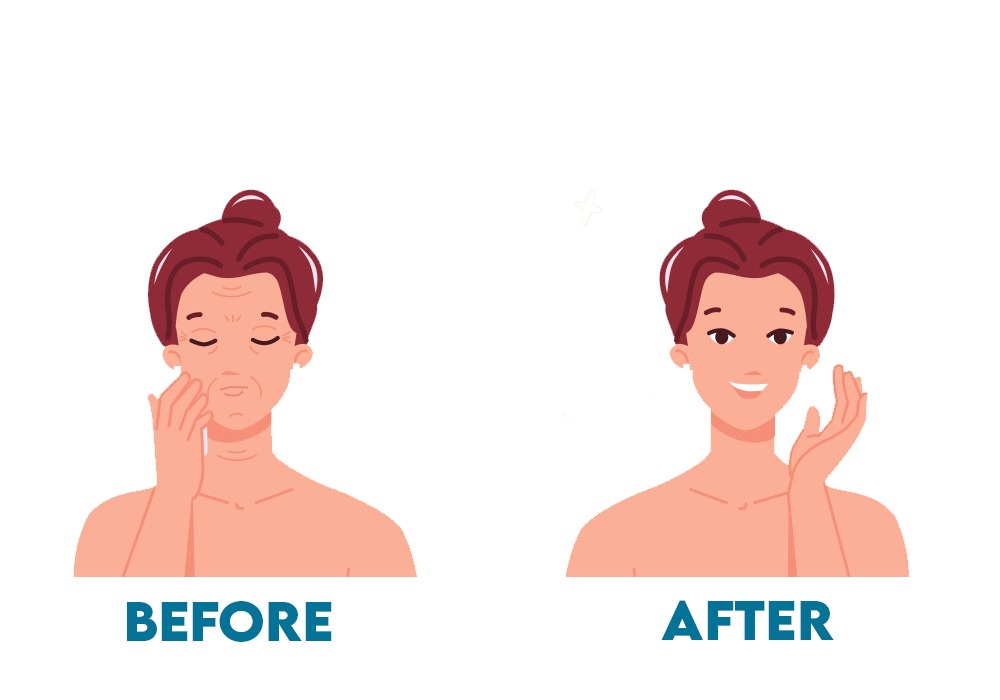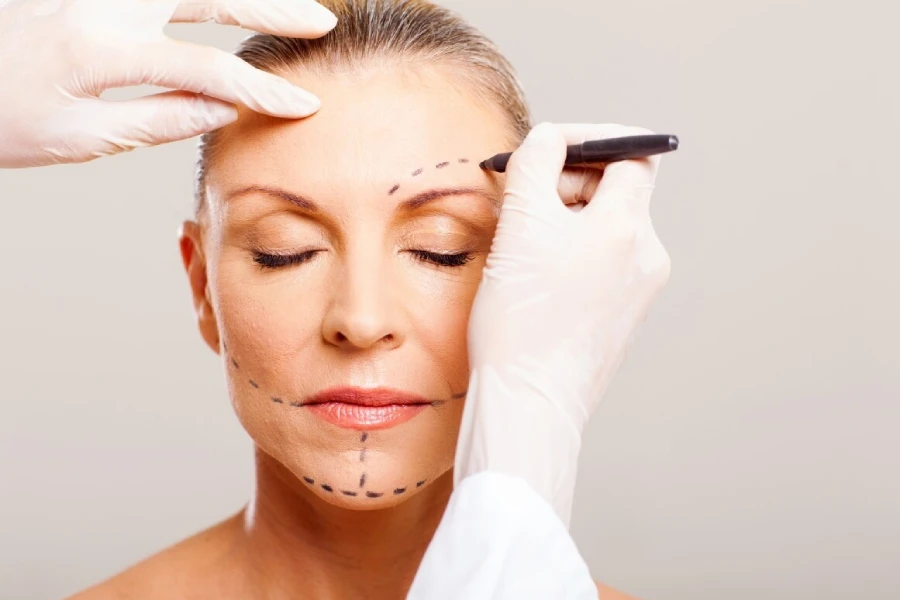- Reviews
- Understanding Facelift Surgery
- Benefits and Candidate Eligibility
- The Procedure
- Treatment Areas and Complementary Options
- Advantages of Choosing Turkey
- Potential Side Effects and Risks
- Post-Treatment Care and Satisfaction
- Treatment Price
- Conclusion
- Why Choose Us?
- FAQ
Facelift surgery in Turkey offers the perfect fusion of medical expertise and aesthetic excellence. Renowned for its highly skilled surgeons and modern clinics, Turkey has become a top destination for facial rejuvenation.
Each facelift is more than a cosmetic procedure—it’s a personalized experience designed to restore youth, confidence, and natural beauty. With state-of-the-art technology and internationally trained surgeons, patients enjoy safe, effective, and life-enhancing results.
Discover why thousands choose Turkey for their facelift journey. Let your transformation begin.
Reviews
2025 Facelift in Turkey offers advanced surgical techniques, expert surgeons, and affordable options, making it a top choice for facial rejuvenation. Discover why facelift Turkey is renowned for natural, transformative results.
Facelift in Turkey
Turkey has established itself as a leading destination for cosmetic procedures, with facelifts being one of the most sought-after treatments.
Why Choose Turkey for Facelift Procedures?
✔️ Internationally trained plastic surgeons
✔️ Accredited and modern medical facilities
✔️ Advanced techniques like deep plane and SMAS facelift
✔️ Modern, accredited clinics with advanced technology
✔️ All-inclusive packages: consultation, surgery, and recovery
✔️ Competitive prices with high-quality outcomes
International patients prefer Turkey for its high standards, affordable care, and unique blend of medical and cultural experiences.
Op. Dr. Ali Çetinkaya: Expertise in Carbon Dioxide Facelift
Who is the top facelift surgeon? The best facelift surgeon in Turkey, Op. Dr. Ali Çetinkaya, is a leading expert in deep plane facelift, mini facelift, and neck lift procedures, offering outstanding results with natural aesthetics, competitive prices, detailed before-and-after care, and customized solutions for international patients seeking premium facial rejuvenation.
Op. Dr. Ali Çetinkaya is recognized as one of Turkey’s top facelift surgeons, specializing in deep plane facelift, mini facelift, and neck lift procedures. He delivers outstanding, natural-looking results tailored to each patient’s unique facial structure.
Renowned for his expertise in carbon dioxide (CO2) facelift, Dr. Çetinkaya combines advanced laser technology with a patient-centered approach to achieve safe and transformative facial rejuvenation.
His comprehensive care includes detailed before-and-after planning, personalized treatment strategies, and competitive pricing—making him a preferred choice for international patients seeking premium facelift solutions.
Understanding Rhytidectomy (Facelift)
A rhytidectomy, commonly known as a facelift, is a surgical procedure designed to reduce visible signs of aging by tightening facial tissues, smoothing wrinkles, and restoring a youthful contour.
What is a Facelift (Rhytidectomy)?
A facelift (rhytidectomy) is a surgical procedure designed to reduce visible signs of aging in the face and neck. It tightens muscles, repositions tissues, and removes excess skin to restore a smoother, more youthful appearance.
This surgery targets common concerns like deep wrinkles, sagging skin, and loss of jawline or neck definition. By addressing these issues, a facelift provides natural-looking rejuvenation and lasting results tailored to each patient’s unique facial structure.
Definition and Medical Basis
Facelift (Rhytidectomy) is rooted in advanced surgical techniques designed to lift and tighten the facial structures. The procedure works by targeting the deeper layers of the face (the SMAS layer), ensuring durable and long-lasting results.
Combining meticulous artistry with medical precision, facelift surgery is tailored to each patient’s unique anatomy, prioritizing natural enhancements while preserving individual expressions.
How Is It Different From Traditional Nonsurgical Procedures?
While non-surgical treatments such as fillers or laser therapies temporarily improve skin tone and texture, a rhytidectomy delivers more comprehensive and permanent results by addressing the structural causes of aging. Key differences include:
- Depth of Treatment: Surgery modifies deeper facial layers for structural lifting, unlike surface-level improvements from non-invasive techniques.
- Longevity: Results from a facelift typically last 7-10 years, far exceeding the duration of non-surgical options.
- Scope of Results: Corrects significant sagging, wrinkles, and loss of definition, offering transformative outcomes not achievable with non-surgical methods.
| 📞Get More Information |
|---|
This time-tested approach remains the gold standard for patients seeking profound, long-lasting facial rejuvenation.
Revision Facelift provides a second chance to correct past results, refine imperfections, and restore a balanced, youthful appearance.

Benefits and Candidate Eligibility
Facelift surgery rejuvenates sagging skin and deep wrinkles, offering natural, long-lasting results. Ideal for individuals aged 40-70 with good health and realistic expectations, it restores youthful contours and boosts confidence.
Key Benefits of a Facelift
A facelift offers comprehensive facial rejuvenation, targeting sagging skin, deep wrinkles, and loss of contour in the face and neck. Key benefits include:
- Natural-Looking Results: Restores youthful appearance without an overdone look.
- Long-Lasting Effects: Provides results lasting 7-10 years.
- Enhanced Confidence: Helps individuals feel more vibrant and refreshed.
Ideal Candidates for Facelift Surgery
Facelift surgery is best suited for individuals who:
- Are in good overall health.
- Experience significant signs of aging, such as sagging skin and wrinkles.
- Have realistic expectations and a positive mindset.
Age and Skin Health Considerations
Most candidates are between 40-70 years old, but suitability depends on skin elasticity and overall health rather than age alone. Maintaining a healthy lifestyle enhances recovery and results.

The Procedure
The facelift procedure combines a detailed consultation, precise incisions, and advanced lifting techniques to rejuvenate the face. With expert care and a clear recovery plan, patients achieve smoother, firmer skin and long-lasting results, making facelift surgery a top choice for those seeking facial transformation.
Pre-Surgery Consultation and Evaluation
The journey to a successful facelift begins with a detailed consultation.
During this appointment, your surgeon will assess your overall health, facial features, and aesthetic goals. You’ll discuss your expectations, the procedure details, and any health considerations.
The surgeon may take photos and recommend the best surgical approach based on your individual needs, ensuring a customized plan for optimal results.
Face Lift Procedure Step by Step
- Anesthesia: General anesthesia or local anesthesia with sedation is administered to ensure comfort.
- Incision Placement: Incisions are made along natural contours, around the hairline, and behind the ears. This minimizes visible scarring.
- Lifting and Repositioning: The surgeon tightens underlying muscles, removes excess skin, and lifts the face to restore youthful contours.
- Closing Incisions: Carefully sutured to ensure minimal scarring, the incisions are closed, and bandages are applied to aid healing.
Recovery Timeline and Expected Outcomes
- Initial Phase: Swelling and bruising may occur, typically peaking in the first 48 hours.
- First Week: The majority of swelling and bruising fades, with stitches usually removed within 7-10 days.
- Full Recovery: Within 3-6 months, the final results will appear, revealing smoother, tighter skin, and a rejuvenated facial contour. The effects of a facelift last for 7-10 years, depending on skin care and lifestyle.
Treatment Areas and Additional Options
Facelift surgery addresses key areas such as the jawline, cheeks, and neck to restore youthful contours. Complementary procedures like neck lifts, eyelid surgery, and brow lifts can further enhance results, providing a complete facial rejuvenation for a more balanced, refreshed appearance.
Areas of the Face and Neck Addressed by a Facelift
A facelift primarily targets the lower half of the face and neck, including:
- Jawline and Chin: Tightening loose skin and improving the contour of the jaw and neck area.
- Cheeks and Mid-Face: Lifting sagging skin and smoothing deep folds around the cheeks and mouth.
- Neck: Eliminating excess skin and fat, creating a smoother, firmer neckline.
Complementary Procedures
Facelift surgery can be enhanced with additional procedures to achieve comprehensive facial rejuvenation:
- Neck Lift: Targets excess skin and fat around the neck, often combined with a facelift for a complete transformation.
- Eyelid Surgery (Blepharoplasty): Removes excess skin and fat from the eyelids to rejuvenate the eye area and reduce puffiness or drooping.
- Brow Lift: Lifts the forehead and brow area to eliminate sagging and deep wrinkles, enhancing facial harmony.
These complementary procedures can be customized based on individual needs, ensuring balanced and natural results.
Advantages of Choosing Turkey
Turkey is a leading destination for facelift surgery, offering world-class care with advanced medical facilities, skilled surgeons like Op. Dr. Ali Çetinkaya, and cost-effective options. Combining expert cosmetic treatments with the opportunity for medical tourism, patients experience top-tier procedures and a rejuvenating recovery in a culturally rich environment.
Why Choose Turkey for a Facelift?
Facelift surgery in Turkey offers an exceptional combination of world-class expertise, state-of-the-art facilities, and affordability, making it the ultimate destination for a rejuvenated appearance and a transformative experience.
- Advanced Medical Facilities: Turkey’s modern clinics are equipped with the latest technology, providing top-notch, safe, and comfortable facelift procedures in a clean, world-class environment.
- Highly Skilled Surgeons: Expert surgeons like Op. Dr. Ali Çetinkaya bring international training and vast experience, offering superior care while maintaining an affordable cost.
- Cost Efficiency: Facelift procedures in Turkey are significantly more affordable than in many other countries, without compromising on the quality of care or results.
- Natural-Looking Results: With advanced techniques, Turkish surgeons focus on achieving rejuvenated, natural facial aesthetics.
- World-Class Care at Competitive Prices: Patients benefit from international standards in healthcare combined with cost-effective options, making Turkey an attractive choice.
- Combining Surgery with Medical Tourism: Enjoy a transformative surgical experience while exploring Turkey’s rich culture, history, and stunning landscapes, making recovery a relaxing and enriching journey.
- Quick Recovery and Minimal Downtime: Thanks to expert care and advanced technologies, patients can expect a smooth recovery process, with results becoming evident in a short time.
- Exceptional Patient Satisfaction: High-quality care, natural results, and personalized service lead to high satisfaction rates, with many patients returning for additional treatments.
How to fix facial volume loss and sagging? Discover effective ways to restore youthful fullness and lift for a refreshed appearance.

Potential Side Effects and Risks
Facelift surgery carries risks such as infection, bleeding, and scarring. These are minimized with proper pre-surgery assessments, skilled surgical techniques, and diligent aftercare. Choosing an expert like Op. Dr. Ali Çetinkaya ensures safer outcomes and smoother recovery.
Potential Risks of Facelift Surgery:
- Infection: Managed through thorough pre-surgery evaluations and proper sterilization.
- Bleeding: Minimised with skilled surgical techniques and close monitoring.
- Scarring: Reduced with precise incision placement and careful aftercare.
Choosing an expert surgeon like Op. Dr. Ali Çetinkaya ensures these risks are significantly minimized for a safe and smooth recovery.
Post-Surgery Side Effects to Expect:
- Swelling: Common in treated areas and usually resolves within a few weeks.
- Bruising: Temporary, expected to fade with proper aftercare.
- Numbness: May occur briefly in the treated regions and typically subsides during recovery.
Following aftercare instructions and close monitoring ensures a smooth healing process and reduces the duration of these side effects. Temporal Facelift or Browlift restores facial harmony, enhancing both your appearance and how you feel.
Post-Treatment Care and Satisfaction
Following expert aftercare instructions is vital for a successful facelift recovery. Patients benefit from personalized care, rapid recovery, and minimal discomfort. Feedback from those treated by Turkey’s top facelift doctor, Op. Dr. Ali Çetinkaya, an expert in his field, highlights exceptional results with natural results and high satisfaction.
Aftercare Practices for Optimal Recovery:
- Follow surgeon’s post-surgery instructions for cleaning and care.
- Use ice packs to reduce swelling and bruising.
- Keep head elevated during the early recovery phase.
- Avoid strenuous activities, smoking, and sun exposure.
- Attend regular follow-up appointments to monitor healing and address concerns.
Real Patient Testimonials and Feedback:
- Patients report high satisfaction with facelift results, especially from experts like Op. Dr. Ali Çetinkaya.
- Natural-looking results, minimal scarring, and quick recovery times are frequently praised.
- Many patients appreciate the personalized care and supportive environment at Turkish clinics.
- Testimonials emphasize the expertise and reassuring approach of surgeons throughout the recovery process.

Treatment Cost
Explore the affordable pricing of facelift procedures in Turkey without compromising quality.
Facelift in Turkey vs. Other Countries
Understand that Turkey offers affordable facelift options compared to other global destinations.
What’s Included in the Cost of a Facelift?
Learn what expenses are typically included in the cost of facelift surgery, including consultations and post-operative care.
Payment Options and Financing for Facelift Procedures
Discover flexible payment plans and financing options available to patients seeking facelift surgery in Turkey.
Facelift surgery prices in Turkey can vary based on factors such as skin condition, treatment area, and the complexity of the procedure. The overall cost is influenced by the type of facelift technique, the surgeon’s expertise, and the number of sessions required for optimal results.
After a detailed consultation, a personalized treatment plan and accurate cost estimate will be provided. To receive tailored advice and detailed information about facelift pricing, reach out to our clinic today for a professional consultation and personalized care plan.
| 📞Get a Quote |
|---|

People Who Had Facelift in Turkey
Turkey offers world-class facelift procedures with cutting-edge technology and highly skilled surgeons like Op. Dr. Ali Çetinkaya. Patients can expect natural results, reduced costs, and quick recovery times, making Turkey a top destination for aesthetic surgery. Before and after pictures of facelift Turkey
Real Patient Testimonials:
💬 Jessica H., USA: “My facelift with Dr. Çetinkaya was truly life-changing! The results are so natural, and the recovery was faster than I expected. The care I received was exceptional.👏🏻”
💬 Rebecca L., UK: “I had some doubts before the surgery, but Dr. Çetinkaya’s professionalism and the clinic’s expertise made me feel reassured every step of the way.”
💬 Claire S., Canada: “I’ve never felt better about my appearance. Dr. Çetinkaya and his team delivered beyond my expectations.🙏🏻”
💬 Monique D., France: “The results of my facelift are subtle but effective. I feel younger and refreshed, and the recovery was so smooth.”
💬 David M., USA: “I couldn’t be happier with my facelift results. Dr. Çetinkaya and his team made sure I felt comfortable throughout the entire process.🔥🔥”
💬 Anna K., Sweden: “Dr. Çetinkaya is a master at what he does. I am amazed by the natural-looking results and how quickly I was back to my daily life.”
💬 Svetlana P., Russia: “I chose Dr. Çetinkaya for his reputation, and I wasn’t disappointed. The facelift procedure was flawless, and I couldn’t be happier with my new look.”
💬 Igor V., Russia: “I was looking for a facelift with minimal downtime, and Dr. Çetinkaya’s skill made that possible. The results are incredible.”
💬 Olivia W., USA: “The transformation is amazing! I feel so much more confident now. The procedure was pain-free, and the healing process was quick.❤️🧿”
💬 Luca B., Italy: “I was nervous, but the whole experience in Turkey was seamless. The results of my facelift were beyond what I expected, and I feel like a new person.”
Ready to transform your appearance? Book a consultation with Op. Dr. Ali Çetinkaya to discuss your personalized facelift plan and begin your journey to youthful rejuvenation.
FAQ
What is Facelift Surgery in Turkey?
A facelift (Rhytidectomy) in Turkey is a popular cosmetic surgery that aims to reverse the signs of aging by lifting and tightening the skin on the face and neck. Turkey is renowned for offering affordable, high-quality facelifts performed by internationally trained surgeons using advanced techniques and state of the art medical facilities.
What Are The Different Types and Techniques Used for Facelifts in Turkey?
Facelifts in Turkey vary based on individual needs. Common techniques include the traditional full facelift, mini facelift, and non-surgical options like CO2 laser facelifts. Surgeons like Op. Dr. Ali Çetinkaya specialize in advanced methods that ensure natural-looking results with minimal recovery time.
Who is Eligible for Facelift Surgery in Turkey?
The ideal candidates for facelift surgery in Turkey are people over the age of 40 who show signs of aging, such as sagging skin, deep wrinkles, and loss of facial volume. A healthy lifestyle, a non-smoking status, and realistic expectations about the results of the procedure are essential for a successful facelift experience.
How Do I Prepare for a Facelift Procedure in Turkey?
Preparing for facelift surgery in Turkey involves consultations with your surgeon to assess your skin, facial structure, and overall health. You may be advised to stop smoking, avoid certain medications, and follow specific skincare routines. Detailed pre-surgery instructions will ensure the best outcome.
How Is The Recovery and Aftercare Process After a Facelift in Turkey?
Post-surgery recovery typically takes 2-3 weeks, with initial swelling and bruising. Aftercare includes following post-operative instructions, taking prescribed medications, and attending follow-up appointments. Surgeons will guide you on how to care for the treated areas and avoid strenuous activities to ensure optimal healing.
How Do I View Before and After Facelift Photos in Turkey?
Before and after photos of facelift surgeries in Turkey showcase the dramatic yet natural results achieved by expert surgeons. These images are available upon request at our clinic and provide potential patients with a visual understanding of the results to be expected.
Who is The Best Facelift Surgeon in Turkey?
Op. Dr. Ali Çetinkaya is one of the best facelift surgeons in Turkey, renowned for his advanced techniques and personalized approach. With years of experience and a dedication to achieving natural, long-lasting results, Dr. Çetinkaya is highly regarded in the field of aesthetic surgery.
How Much Does a Facelift in Turkey Cost in 2025?
The cost of a facelift in Turkey varies based on factors such as the surgeon’s expertise, the clinic’s location, and the complexity of the procedure. Generally, the final price can be influenced by the number of areas being treated, the type of facelift technique used, and any additional procedures like eyelid or neck surgery. To get a more accurate estimate tailored to your needs, it’s recommended to schedule a consultation where a personalized treatment plan and cost breakdown will be provided.
What is The Best Hospital for Facelift Surgery in Turkey?
The best choice for facelift surgery in Turkey is Op. Dr. Ali Çetinkaya, a leading expert in aesthetic and reconstructive surgery. Known for his advanced expertise in facelift procedures, particularly CO2 laser facelifts, Dr. Çetinkaya delivers natural-looking, long-lasting results with a focus on patient safety and satisfaction. His personalized approach ensures that every patient receives the highest quality of care throughout their facelift journey.
Are Facelift Procedures Safe in Turkey?
Facelift procedures in Turkey are very safe, particularly when performed by experienced surgeons like Op. Dr. Ali Çetinkaya. Turkey’s medical tourism industry adheres to international standards, with modern clinics and advanced technology, ensuring patient safety throughout the process.
How Do I Choose the Right Facelift Surgeon in Turkey?
Choosing the right facelift surgeon in Turkey involves researching their qualifications, experience, and patient reviews. Look for a surgeon like Op. Dr. Ali Çetinkaya, who specializes in aesthetic and reconstructive surgery and has a proven track record of successful facelifts and satisfied patients.
Can I Combine Facelift Surgery with Other Cosmetic Procedures in Turkey?
Yes, many patients choose to combine their facelift surgery with other cosmetic procedures such as eyelid surgery, brow lifts, or liposuction. Combining treatments can provide more comprehensive results, and in Turkey, skilled surgeons offer personalized plans to address multiple aesthetic concerns in a single session.
How Long Will My Facelift Results Last in Turkey?
Facelift results in Turkey typically last 7-10 years, depending on factors such as age, skin type, and lifestyle choices. While the natural aging process continues, a facelift significantly reduces visible signs of aging and provides long-lasting rejuvenation. Maintaining a healthy lifestyle can help prolong the results.
- Revision Facelift - October 4, 2025
- Natural Facelift - October 4, 2025
- Vertical Facelift - October 4, 2025

